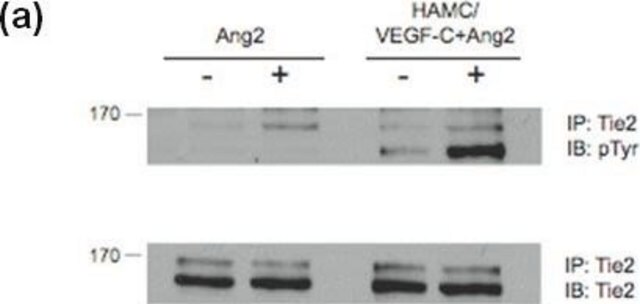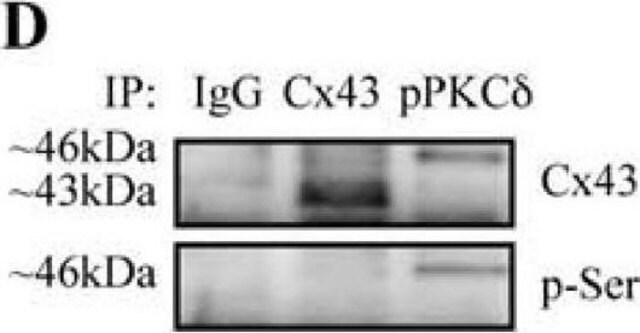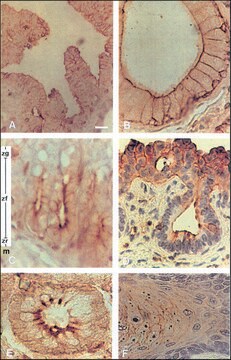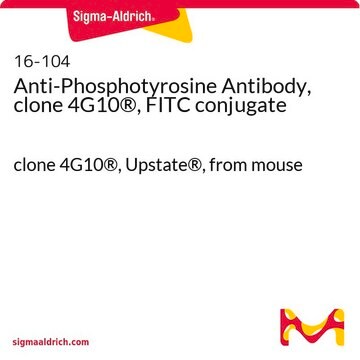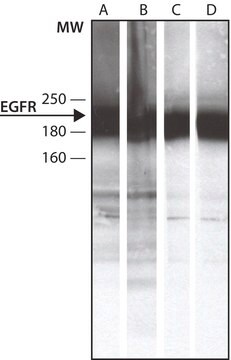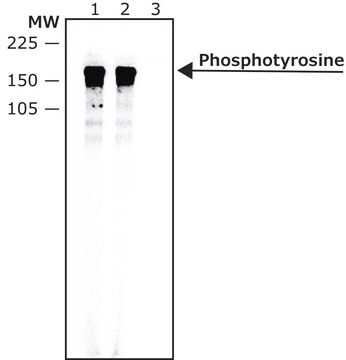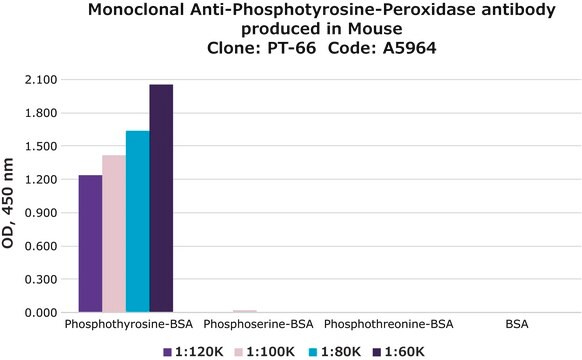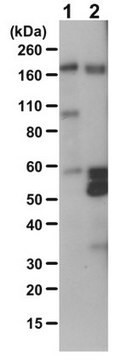P5872
Anti-Phosphotyrosine antibody, Mouse monoclonal
clone PT-66, purified from hybridoma cell culture
Sinónimos:
Monoclonal Anti-Phosphotyrosine, Phospho-Tyr, Phospho-tyrosine, p-Tyr
About This Item
Productos recomendados
origen biológico
mouse
Nivel de calidad
conjugado
unconjugated
forma del anticuerpo
purified immunoglobulin
tipo de anticuerpo
primary antibodies
clon
PT-66, monoclonal
Formulario
buffered aqueous solution
envase
antibody small pack of 25 μL
concentración
~2 mg/mL
técnicas
flow cytometry: suitable
immunocytochemistry: suitable
immunohistochemistry: suitable
immunoprecipitation (IP): suitable
indirect ELISA: 0.5-1.0 μg/mL using phosphotyrosine conjugated to BSA
radioimmunoassay: suitable
western blot: 0.25-0.5 μg/mL using total cell extract of human platelets
isotipo
IgG1
Condiciones de envío
dry ice
temp. de almacenamiento
−20°C
modificación del objetivo postraduccional
unmodified
¿Está buscando productos similares? Visita Guía de comparación de productos
Descripción general
Especificidad
Inmunógeno
Aplicación
- immunoblotting,
- immunofluorescence,
- immunohistochemistry
- immunocytochemistry
- flow cytometry
- immunoprecipitation
- enzyme linked immunosorbent assay (ELISA)
- radio immunoassay (RIA)
- immunoaffinity isolation
Acciones bioquímicas o fisiológicas
Forma física
Cláusula de descargo de responsabilidad
¿No encuentra el producto adecuado?
Pruebe nuestro Herramienta de selección de productos.
Código de clase de almacenamiento
12 - Non Combustible Liquids
Clase de riesgo para el agua (WGK)
WGK 2
Punto de inflamabilidad (°F)
Not applicable
Punto de inflamabilidad (°C)
Not applicable
Elija entre una de las versiones más recientes:
¿Ya tiene este producto?
Encuentre la documentación para los productos que ha comprado recientemente en la Biblioteca de documentos.
Los clientes también vieron
Artículos
Review a high-throughput ELISA-based method to identify peptide substrates for class-specific and/or enzyme-specific Protein Tyrosine Kinases (PTKs) that can be utilized for the detection of kinase activity both in vivo and in vitro.
Nuestro equipo de científicos tiene experiencia en todas las áreas de investigación: Ciencias de la vida, Ciencia de los materiales, Síntesis química, Cromatografía, Analítica y muchas otras.
Póngase en contacto con el Servicio técnico